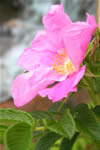Test your Soil
Test your soil first, to determine the pH level of your soil and what kind of nutrient s you need to add, if any. Is the soil acid or alkaline? Most plants prefer soil that is slightly acidic, but there are some that must have alkaline soil to grow. You can alter the soil's pH level, but it's much easier to simply plant for the soil you have.
s you need to add, if any. Is the soil acid or alkaline? Most plants prefer soil that is slightly acidic, but there are some that must have alkaline soil to grow. You can alter the soil's pH level, but it's much easier to simply plant for the soil you have.
Buying Plants
Often we buy plants on impulse then find there is nowhere in the garden that really suits them. Before buying plants carefully examine your garden to see how much sun and shade it gets, whether the soil is well drained or waterlogged and whether your aspect is sheltered or windswept. You'll then be equipped to go and buy the best plants for your garden; shade-loving plants for the sheltered areas, sun-lovers for the warm spots, drought-resistant plants for the dry areas which may be either sunny or shaded, and swamp plants for the poorly-drained parts.
Planting in groups or singularly
Now you need to decide, will you plant in groups or singly? If you buy 'one of everything' your garden may seem rather spotty. Group plantings are organised, harmonious and you can vary the colour for interest.
Before planting out, place your chosen plants around the garden bed in their pots to see how they will look. Re-arrange them until you are satisfied. Grouping plants in sets of threes or fives usually looks better than planting in groups of even numbers. Be sure that you have an interesting combination of colours and textures of plants. Tall plants should go to the back or the centre if your garden will be viewed equally from all sides. Try to keep your plants away from trees. The roots of trees are very thirsty and will take all the nutrients and moisture meant for your flowers.
The Colour Scheme
The right colour scheme is one way to maintain the harmony in your garden. Imagine the colour of the flowers when they are in bloom. Some colours may clash with others, but can still be planted side-by-side if they have a different blooming season. Foliage colour is also important. Many flower plants have silver, grey or purplish foliage that is just as attractive as the flower. This means that they are still attractive well past the blooming season and so have added value.